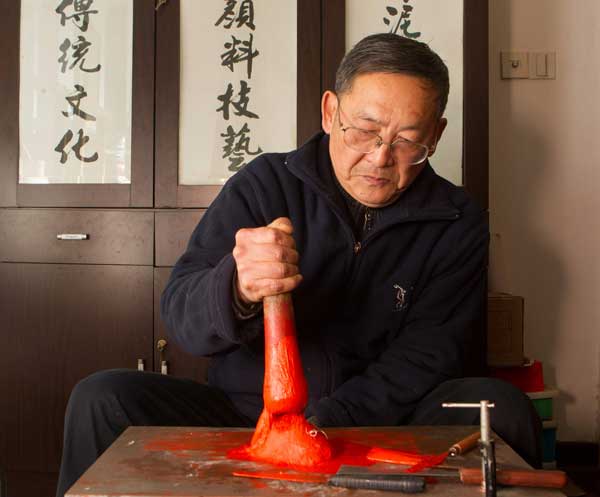Colors of nature
 |
|
Photo by Gao Erqiang / China Daily |
But painter Wang Yiying was unhappy with the color made by machine using simplified procedures. "For example, the ochre, which is used to paint bark or dark skin, is either too dark or too red."
His idea was echoed by Chen Rudong, a painter in Suzhou, who has used Qiu's colors for more than 10 years.
| The long way home |
"Qiu has stuck to the tradition all these years. I believe in him and trust his skills. Only his colors can satisfy my requirement for the paintings," Chen says.
Both Wang and Chen now regularly order colors from Qiu, who left the factory and returned to his handiwork in 2005.
But Qiu limits his supply to painters he knows. The frequent shortage of raw materials hinders him from producing more.
Many farmers who formerly grew indigo have turned to more profitable plants, Qiu says. The garcinia, a plant which produces natural gamboge that could be used to paint rape flower fields in spring, becomes hard to obtain for its pigment after it was proved to be an effective medicine to prevent breast cancer.
His color-making technique was listed as a State-level intangible cultural heritage in 2010. The most expensive color costs 26 yuan ($4.30) for a package weighing 3 grams.
But Qiu does not have any apprentices. The only helper is his son. He has written the skills in books but he says ultimately one needs to follow him to master the techniques.
"I am willing to impart my experiences, but the work is tedious, time-consuming and what's worst, does not bring about much profit. Are there any young men who are willing to take it up?"
For more China Face, here

















